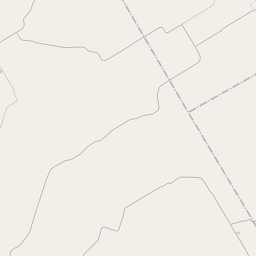St. John Lutheran Church
Historical marker location:






The area around Coryell City was settled in the 1880s by a number of German immigrant families. Desiring to worship in their native language, a group of settlers began meeting together in homes.
The Rev. Johannes Barthel of the Luthern Church occassionally conducted services for the settlers. He was succeeded by the Rev. R. Seils, who officially organized St. John Luthern Church on December 7, 1889, in the Home of Fritz Wiede.
The congregation purchased two acres of land and built their first sancturary in 1890. It was replaced by a larger structure in 1908, which served the congregation until it was destroyed by fire in 1921. A new sanctuary built that year was replaced by a red brick structure in 1959.
Worship services were periodically conducted in the German language until 1952, despite some ill feeling the practice caused during the years of World War I.
Adjacent to the church is the St. John Lutheran Cemetery. Dating to the 1890s, it is the final resting place of many church and community members, including verterans of World War I, World War II, and Vietnam
As one of the most visible programs of the Texas Historical Commission (THC), historical markers commemorate diverse topics in Texas history, including: the history and architecture of houses, commercial and public buildings, religious congregations, and military sites; events that changed the course of local and state history; and individuals who have made lasting contributions to the state, community organizations, and businesses.
The Alamo, a mission in San Antonio, is perhaps the most famous historical site in Texas. It was the site of a key battle during the Texas Revolution in 1836.
During the Texas Revolution and the subsequent establishment of the Republic of Texas, Coryell County saw significant growth. The area attracted pioneers and settlers who were drawn by the fertile land along the rivers. In 1854, the county was officially organized and named after James Coryell, an early frontiersman who was known for exploring and surveying the area.
Throughout the late 19th and early 20th centuries, Coryell County experienced periods of prosperity and challenges. Agriculture, particularly cotton production, played a significant role in the local economy. The arrival of the railroad in the late 19th century enhanced the county's connectivity and spurred growth in trade and commerce.
The county also contributed to the military history of Texas. During World War II, Camp Hood (now Fort Hood) was established in the southern part of Coryell County. The military installation has had a profound impact on the local economy, serving as an economic engine and a significant employer for the region.
Today, Coryell County continues to thrive as a vibrant community. It is home to a diverse population and offers a mix of urban and rural landscapes. The county's rich history can be seen in its historic buildings, museums, and landmarks, all of which provide a glimpse into the past and contribute to the county's unique cultural identity.
Coryell County Timeline
This timeline provides a concise overview of the key events in the history of Coryell County, Texas.
- 1854 - Coryell County is established by the Texas legislature.
- 1859 - The county seat, Gatesville, is established.
- 1861-1865 - The American Civil War impacts Coryell County, leading to economic hardships.
- 1872 - The Texas Central Railroad is completed, boosting the county's economy.
- 1882 - The first county courthouse is constructed.
- 1905 - The original county courthouse is replaced with a new building.
- 1929 - The Coryell County Museum opens, showcasing the area's history.
- 1942-1946 - The county experiences growth during World War II due to the establishment of Camp Hood (now Fort Hood).
- 1963 - The current county courthouse is built, replacing the 1905 building.
- 1997 - The Coryell County Courthouse is added to the National Register of Historic Places.